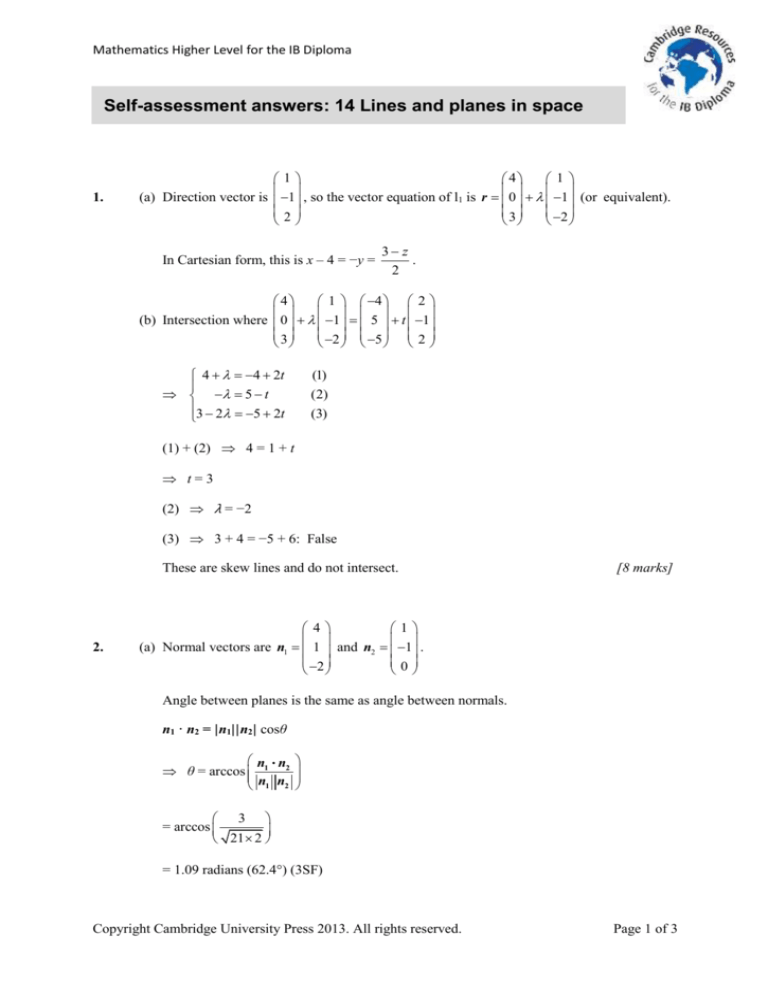
Mathematics Higher Level for the IB Diploma
Self-assessment answers: 14 Lines and planes in space
1.
1
4
1
(a) Direction vector is 1 , so the vector equation of l1 is r 0 1 (or equivalent).
3
2
2
In Cartesian form, this is x – 4 = −y =
3 z
.
2
4
1 4 2
(b) Intersection where 0 1 5 t 1
3
2 5 2
4 4 2t
5 t
3 2 5 2t
(1)
(2)
(3)
(1) + (2) 4 = 1 + t
t=3
(2) λ = −2
(3) 3 + 4 = −5 + 6: False
These are skew lines and do not intersect.
2.
[8 marks]
4
1
(a) Normal vectors are n1 1 and n2 1 .
2
0
Angle between planes is the same as angle between normals.
n1 · n2 = |n1||n2| cosθ
n n
θ = arccos 1 2
n1 n2
3
= arccos
21 2
= 1.09 radians (62.4) (3SF)
Copyright Cambridge University Press 2013. All rights reserved.
Page 1 of 3
Mathematics Higher Level for the IB Diploma
(b) Direction vector d of intersecting line is perpendicular to both normals:
2
d = n2 × n1 = 2
5
A point on both lines (by inspection) is (2, 0, 1).
2
2
So the vector equation of the intersecting line is r 0 2
1
5
3.
[8 marks]
3 1 5
(a) If 1 t 1 1 ,
1 2 3
3 t 5 (1)
1 t 1 (2)
1 2t 3 (3)
(1) = −2
(2) 1 + t = −1 which is consistent
(3) 1 + 2t = −3 which is consistent
So (5, −1, −3) is on l.
0
(b) AD 4
7
1 1
AD 1 7
2 4
1
(c) Normal to the plane n 7 , plane passes through (5, −1, −3).
4
So the Cartesian equation of the plane is x – 7y + 4z = 0.
Copyright Cambridge University Press 2013. All rights reserved.
Page 2 of 3
Mathematics Higher Level for the IB Diploma
3 1
3 t 5 t 2
(d) P lies on l, so P = 1 t 1 for some t. Then DP 1 t 3 t 2 .
1 2
1 2t 4 2t 3
1
Require DP perpendicular to 1 , so
2
t 2 1
t 2 1 0
2t 3 2
(t + 2) + (t – 2) + (4t – 6) = 0
t=1
P = (2, 2, 3)
Copyright Cambridge University Press 2013. All rights reserved.
[14 marks]
Page 3 of 3

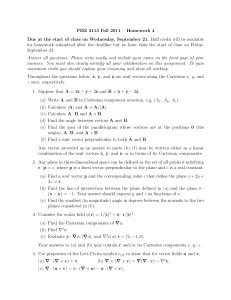


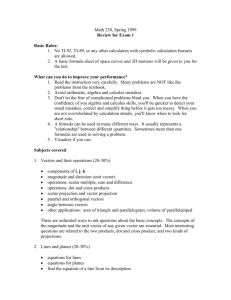
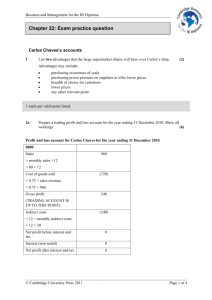

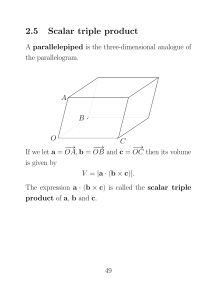
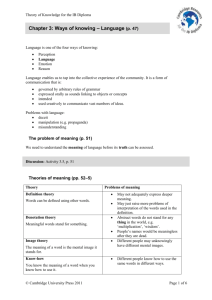

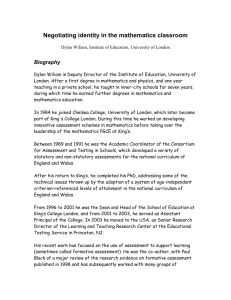
![(accessible to students on the path to grade 3 or 4) [6 marks]](http://s3.studylib.net/store/data/006845113_1-25fb1d68cb1cd9484834b6105a1159df-300x300.png)
